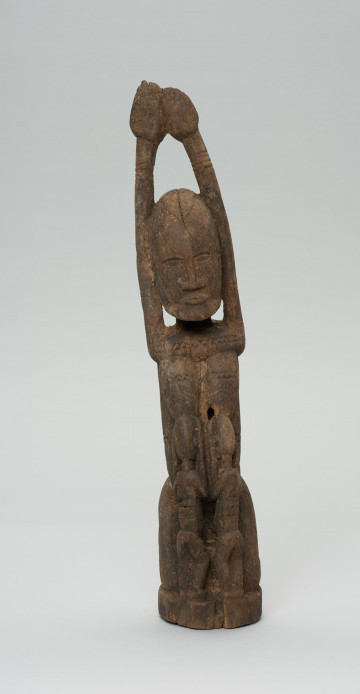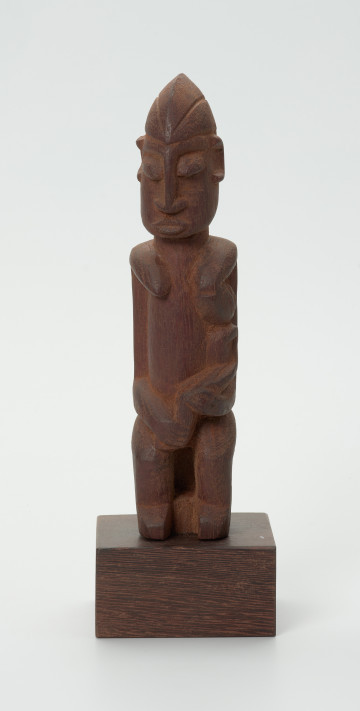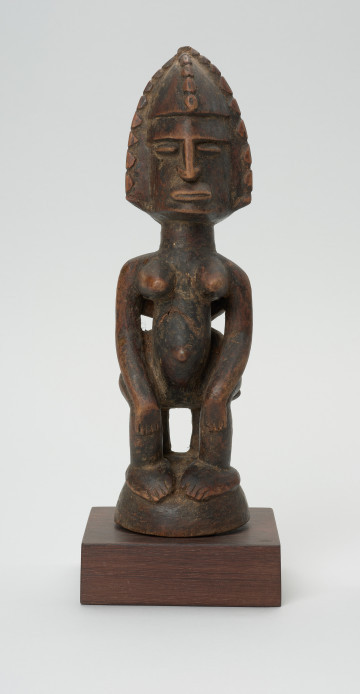
Figure - woman with child
między 1951 — 2000
National Museum in Szczecin
Part of the collection: Collection of Dogonian art
Dogon art abounds in depictions of a woman and child. They symbolically refer to maternal love and female fertility, which are highly valued in Africa. Having children is a very important aspect of life, not only for the Dogon, but in the whole of Africa. Children are considered an expression of wealth and prestige. They are a kind of investment - the greater the number of offspring the greater the chances for a prosperous and secure future.The lack of children is treated as a defeat, a reversal of divine rights, negligence. The woman is always under social pressure to have children, because only a fertile Dogon woman fulfils her social role, carries out the divine plan, indirectly influences the fertility of the land and guarantees the continuity of generations.According to Ogotemmele Dolo, a sage who passed on much of his people's knowledge to Marcel Graule, a French anthropologist, a woman's fertility is greatly influenced by the words of men directed in her direction. For every man, by talking to a woman during the day, instils in her a heavenly germ and thus promotes her fertility. Conversations at night have a completely different effect on a woman, destroying the embryo and making her incapable of procreation. It is not only the talk that matters, the quality of the words spoken is also important. Every bad word spoken by a man to a woman enters with the air she breathes into her nose and travels through the throat, liver and into the genitals, contaminating them. To cleanse the body, wash away the harmful word and thus restore fertility, a woman has to rub herself with oil from the sa tree (lannea acida), traditionally kept in a vessel resembling a foetus.
Ewa Prądzyńska
Author / creator
Dimensions
cały obiekt: height: 27 cm, width: 13 cm
Object type
figure
Creation time / dating
Creation / finding place
Identification number
Location / status

między 1951 — 2000
National Museum in Szczecin

między 1951 — 2000
National Museum in Szczecin

między 1951 — 2000
National Museum in Szczecin
DISCOVER this TOPIC
Museum of King Jan III's Palace at Wilanów
DISCOVER this PATH
Educational path